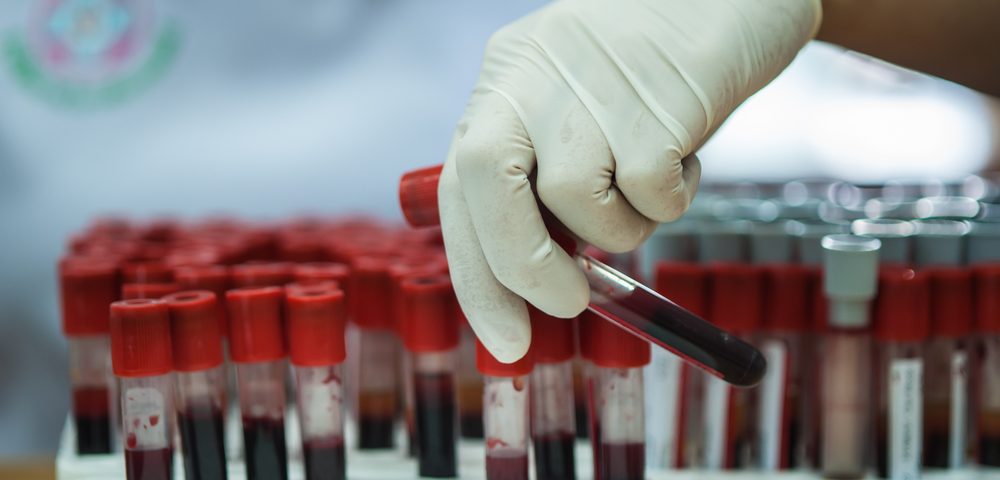High levels of a naturally occurring protein, high-mobility group box 1 (HMGB1), are present in the blood of people with asbestos exposure and even higher in two asbestos-related diseases — asbestosis and malignant pleural mesothelioma (MPM), according to a new Chinese study.
The study, “Serum HMGB1 as a Potential Biomarker for Patients with Asbestos-Related Diseases,” appeared in the journal Disease Markers. Its findings could be used to help diagnose and monitor both asbestosis and MPM.
Asbestos exposure, which is defined as breathing in asbestos fiber dust in places where asbestos is present — especially on the job — can cause both asbestosis, a scarring disease affecting the lungs, and mesothelioma. Such exposure also causes pleural plaques (PP) in some people, though such plaques do not cause illness.
The study, conducted by doctors at the Zhejiang Academy of Medical Sciences in Hangzhou, included 497 subjects recruited from several small industrial towns in southeastern China with a long history of asbestos exposure (AE) from 1960 to 2012. Researchers divided them into six groups: 71 healthy subjects without any known history of AE, 170 subjects exposed to asbestos for less than 10 years, 129 subjects occupationally exposed to asbestos for over 10 years, 81 subjects with PP, 31 patients with asbestosis and 15 patients diagnosed with MPM.
The results showed that HGMB1 blood levels could help distinguish people with AE from unexposed people, because levels were higher in those who had been exposed to asbestos regardless of how long. Subjects with PP had similar levels to the AE subjects.
HMGB1 is a cytokine, a protein produced by the body’s immune system that causes inflammation. HMGB1 levels were even higher in patients with asbestos-related diseases, which allowed the researchers to discriminate AE subjects from those with asbestosis or MPM. HMGB1, however, could not be used to distinguish one disease from the other.
HMGB1 has been reported to mediate the expression of matrix metalloproteinases MMP2 and MMP9, which led researchers to test whether their levels in the blood correlated with HMGB1.But levels of MMPs 2 and 9 were not similar to HGMB1 levels in these asbestos-related diseases, making MMPs less useful for their monitoring and diagnosis.
“From our perspective, HMGB1 may be a suitable blood biomarker to monitor occupational workers and their families who have a history of residential exposure to asbestos, but accurately discriminating MM and asbestosis requires further investigation,” researchers noted. “Nevertheless, the combination of serum HMGB1 and radiographic findings should be helpful to stratify the risk of MM in AE populations.”
The scientists said their study showed that expression of HMGB1 was significantly higher in people who had been exposed to asbestos as well as those with asbestos-related diseases. They added that globally, occupational exposure to asbestos causes an estimated 107,000 deaths a year, mostly from asbestos-related lung cancer, asbestosis and mesothelioma. In China alone, more than one million workers may have been exposed to asbestos on the job.
“For clinical diagnosis, these results indicated that serum HMGB1 is a sensitive and specific biomarker to discriminate asbestosis and MM from healthy or AE individuals,” they said, adding that their findings “may also provide new insights into the molecular mechanisms of the progression and prognosis of ADRs and lead to new approaches for effective diagnosis and therapy.”



2 comments